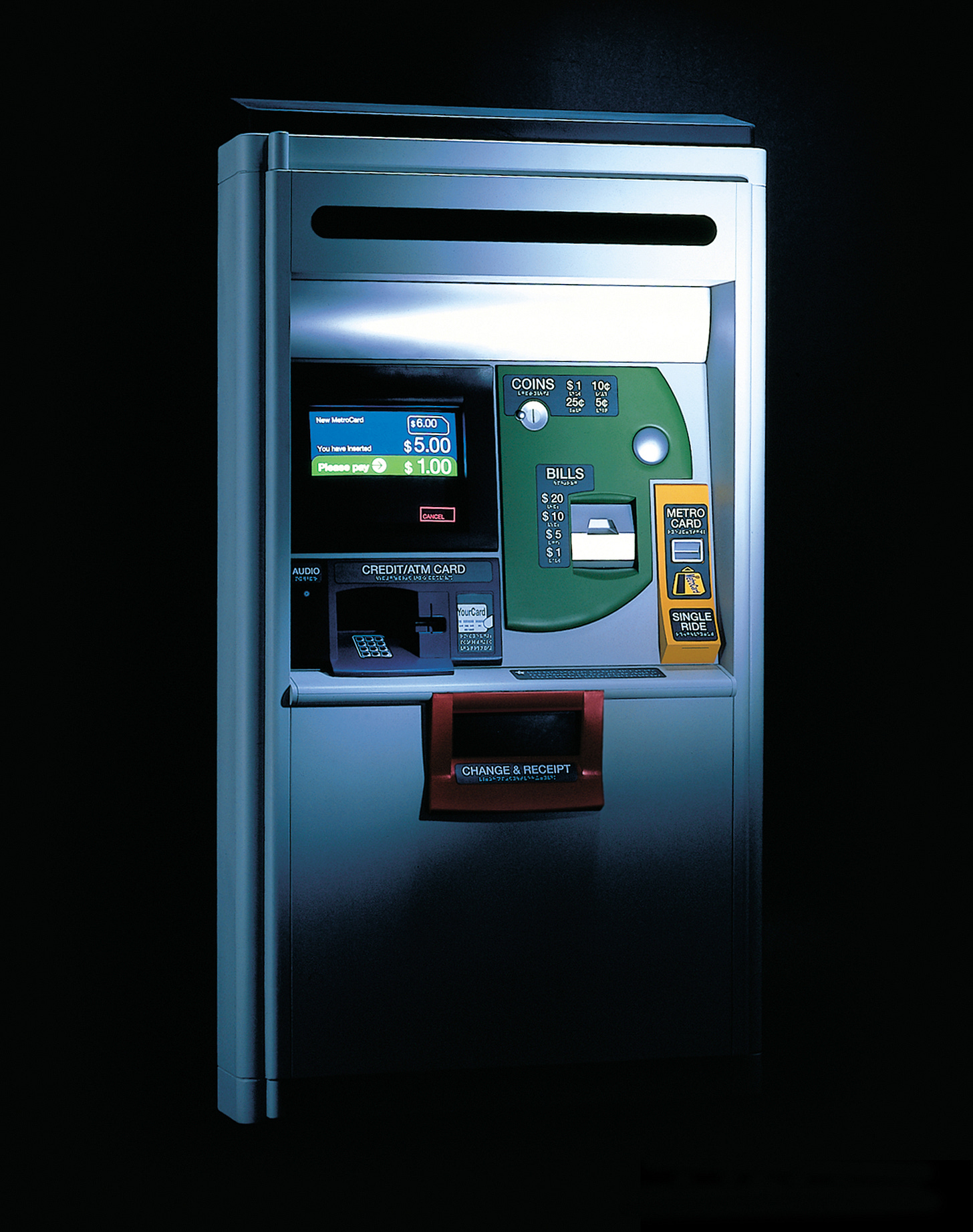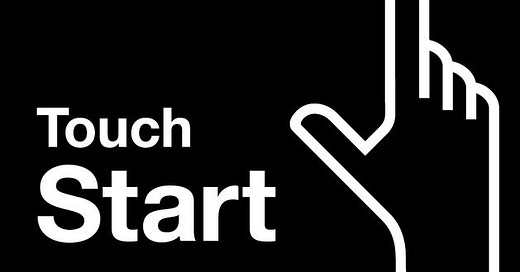In an interview this week, Jarrett Fuller asked me what would be considered definitively “not urban technology.” My response: if you can find something that impacts a billion or more people and does not have urban implications or involve some use of data or computation, I will give you a cookie! (That offer stands, by the way, 🍪 ➡🧍if you can name something big and meaningful that has truly zero connections to urban technology.) In so far as urban technology feels like a broad area of study, that tells us more about life in the 21st century than anything else. We’re an urban species and a digital one. Given that, how do we thrive? For the next couple weeks we will write about different skills and their applicability to urban technology, because these are just some of the things students in our program will be learning. This week we start with Interaction Design. But first, a bit of context.
I’m Bryan Boyer, Director of the Urban Technology degree at University of Michigan. This newsletter is about cities, technology, and design. While we launch the program, we’re detailing the process of working toward the day when we welcome our first students. Thanks for reading. Got questions? Bop the button below and let us know.
🧭 Oh The Places You Will Go… to Transform Cities to be More Humane, Just, and Sustainable
One of the many exercises we’ve gone through while designing the new degree offering is to work backwards from where graduates of the Urban Technology program at University of Michigan may go after completing their studies. We’re excited by the possibility that students may end up in companies or startups, sure, but also in NGOs or non-profits, philanthropic foundations, advocacy work, and governments. There’s tons of interesting and necessary work to be done governing digital technologies, and who better to do that than folks who have a strong understand of the tech and a deep-rooted urban ethics?
Every graduate of the program should be aware of and respectful of the way that different sectors operate. So for any given student, it should be equally plausible that they end up working in government or at an NGO, for instance.
There’s also no single job title or role that our students might fill after graduation, but they should instead have a satisfyingly wide set of options. When it comes to the roles and even job titles that could describe the work students do in their first jobs and early careers, there’s a broader spectrum. We’ve captured some likely possibilities in the list below, but there are of course countless others.

It looks like such a simple table, but this took some work! Just because something’s not on the list does not mean that our students won’t be able to pursue that work after graduation. Some students will come with or develop their own deep acumen in computer science and will end up working as engineers or developers. Some will probably work in marketing, or as real estate developers, or… the list could go on. But the roles above are the ones that we think our students will be particularly well suited for. Let’s take a more detailed look at just one of the combinations from this list.
🎛 What is Interaction Design?
Interaction design is the practice of shaping the way people interact with objects, both physical and digital. Think about the experience of sending messages on a social media app, turning on an e-scooter, or using an information kiosk in a museum. If you’ve ever had a painful time doing one of these things or something like it, a probable culprit for your frustrations is poor interaction design.
Interaction designers think about the steps in a process that users move through, the interface(s) available to the user, the types of feedback that inform the user, and… you guessed it… the interactions that are involved for the user to accomplish their goals. Ever had a heck of a time paying for a bus or subway ticket or parking voucher? Or conversely, ever done that successfully in a place where you do not speak the language? Interaction design is the part of why you felt the way you did.
To be an interaction designer you have to be good at understanding context of your users and adept at getting to know their needs. You would also want to be proficient at creating the digital and interactive design of user interfaces. That means making “wireframes” which are simple outline drawings of apps and websites to sketch out the flow of an experience. Visual mockups, which are refined visual designs of digital interfaces, would also be in your wheelhouse, so having good aesthetic judgement and a sense of what’s visually compelling is helpful. You may geek out about fonts (ahem, typefaces!) and the visual design of icons, but you don’t need to. And finally, you would be good at working with technical counterparts and others who work on operational considerations within an organization to understand that can reasonably be coded, built, and maintained.
🎟 How is Interaction Design relevant to Urban Technology?
The NYC subway ticket vending machines are a good example. They’re big chunky machines but they are very simple and clear, and have a New York attitude to them. Behold!

Money is green and goes into the green zone. Cards are yellow and come out of the yellow zone. The color coding of the hardware and software work together to form a cohesive set of interactions between the interface on the screen, the hardware of the kiosk itself, and the paper items that you feed into or receive from the kiosk.
Why is that simplicity important? Because you have 1.7 billion riders per year on the NYC subway. Imagine confusing those riders and slowing down the process for each one by even a tenth of a second. That would add up to nearly 200 days of wasted time! Not everyone is using the kiosk on each ride, but you get the point. Interactions in cities are repeated so many times that even small tweaks can have an unexpectedly large impact.
Aaron Reiss shares an analysis of the NYC subway ticket machines with a focus on how much button pressing they require—a concern that feels extra relevant in COVID times—and puts the NYC machines head to head against San Francisco’s BART kiosks. Some people compare regional differences in wine or coffee or things like that, but interaction designers look for the way that situated interfaces spark local rituals and behaviors.

Images: Antenna Design
Compare the act of buying a ticket at a machine like the one above versus grabbing it from a local vendor, like the Kioskis in Helsinki which are little buildings instead of vending machines. The Kioskis used to sell food and newspapers and tram tickets, but these days you use your smartphone to pay for the tram ride and get a coffee at the Kioski while you wait.

Notice the tram tracks in the foreground and the high curb
As an interaction designer you need to understand the user experience and how it’s modulated by user interfaces which may be visual, voice, touch, motion, or any number of other means. Interaction designers spend a lot of time thinking about and drawing user interfaces but even more time trying to understand the way those interfaces get used by people—and in cities the “people” in question here come in all shapes and sizes, with all different kinds of needs and expectations. That’s one of the things that makes interaction design for urban technology different from plain old interaction design.
Compare public transit ticketing to something like, say, a pizza delivery service 🍕🚖. We’re not sleeping on pizza delivery, but think about this: if you’re designing a pizza delivery app you can cater to a subset of users who are your most likely customers. Those people have the economic status to order delivery food, the technical savvy to do so online, and the cultural awareness that this is an option.
But if you’re designing the ticket system for a bus, or the search interface at a library, or the self check-in station at a COVID-proofed health clinic, or the information kiosk in a park, or the app that lets you report a corrupt cop, or any of the myriad other things that underpin (or could underpin) life in cities, you don’t have a “most likely customer.” You have users, citizens, the public, and you have an obligation to build things that help everyone succeed.
If you don’t design in an accommodating and welcoming manner, you’re failing at your job. Urban technologists willingly, gleefully, lovingly choose to design for and with the rich diversity of urban populations. That’s what makes this work hard and also more fun.
Links
📱 When so many interactions presume internet connectivity, how do you cope when the internet is blocked or unavailable? Here’s a guide on “documenting” human rights abuses, humanitarian crises, and other issues beyond the reach of wireless.
🚙 “How well we put [robots] to use to ferry goods and people around in clever new ways, and tend to dull, dirty, and dangerous work of municipal upkeep, will mean the difference between keeping our cities humming along or abandoning them altogether,” argues Anthony Townsend. Full disclosure: Anthony and I are frequent collaborators.
🧶 “Materials that inspire, promote, and support the transition towards a more sustainable artistic practice,” including tomato wire, walnut, and human hair. What will you build with these?
🌉 If you want to zone out for a minute, watch a 14th century European bridge be built by very speedy ghosts.
☀️ This photo of solar panels floating in the Yamakura Dam reservoir is fascinating and just wow.
This week: Meetings. 🏃♂️


